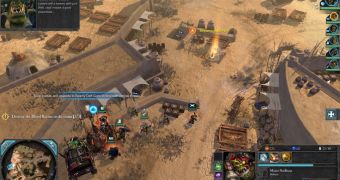When Dawn of War II first came out, more than two whole years ago, a lot of the people that played the original were disappointed with the product that developer Relic and publisher THQ delivered and basically said that this was no longer a real-time strategy game.
The change was pretty big, focusing on just four squads of units with unique abilities, clearly defined roles and placing a heavy emphasis on developing a battle plan for any encounter, with enemies that could often kill the entire party if the logic behind the initial attack was not sound.
Chaos Rising only served to deepen the role-playing game and tactical aspects, adding a corruption element to the wargear and creating even more possibilities for good and bad action during the actual missions.
It was an evolution of the real-time strategy, smaller, more focused, offering more of a challenge on the higher difficulty levels and allowing for more choice on the part of the player, both before the battles and during them.
And now Retribution practically does a 180-degree turn in order to bring the series back firmly into the real-time strategy space, with those who wish so able to unleash pretty big armies on their enemies, complete with Land Raiders and other tanks, big numbers of infantry and one or two heroes thrown in for good reason for support powers and taking out the most powerful enemy threats.
I'm not sure whether Relic did this because of pressure from its fans or because the developers working there believe in delivering as many choices linked to gameplay to the player as possible.
But the move is a good one and it makes Retribution a game that blends the traditional mechanics of strategy, like recruiting and a sort of resource harvesting through combat, with the innovations introduced in the original Dawn of War II, a game that appeals to both worlds and can provide a template for the future of real-time strategy.

 14 DAY TRIAL //
14 DAY TRIAL //